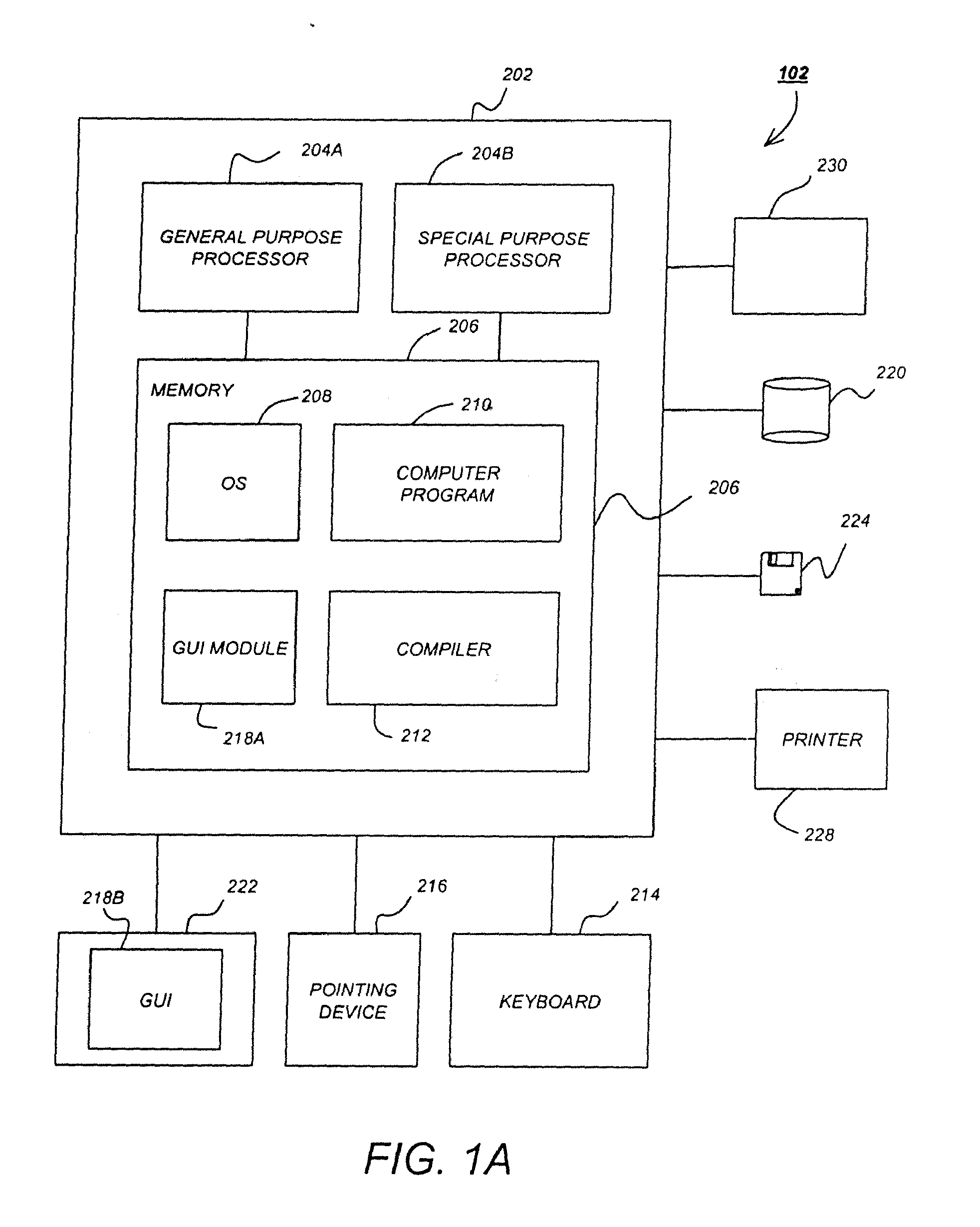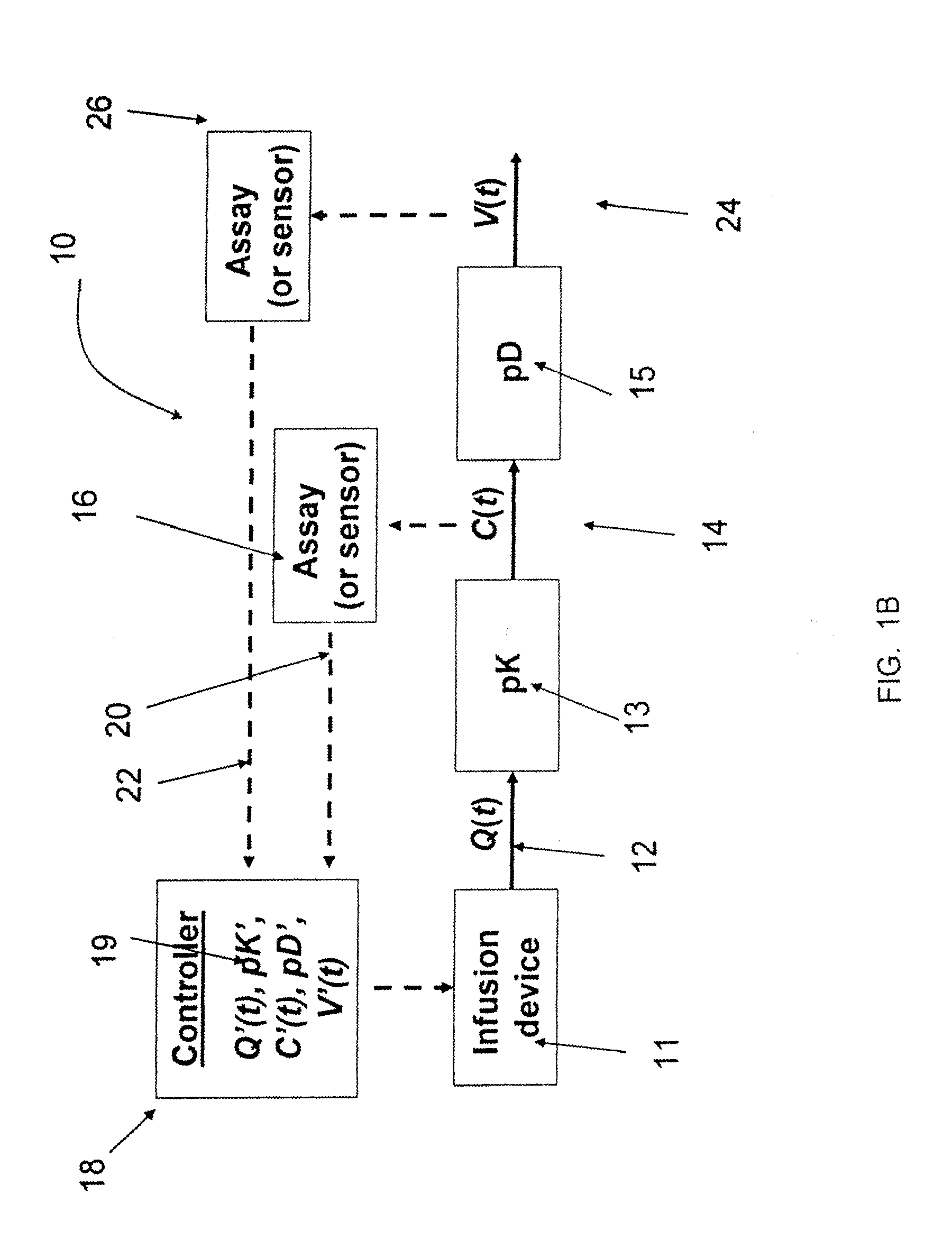Method and system to define patient specific therapeutic regimens by means of pharmacokinetic and pharmacodynamic tools
a technology of pharmacokinetic and pharmacodynamic tools, applied in the direction of instruments, process and machine control, peptide/protein ingredients, etc., can solve the problems of affecting patient compliance and outcome, complicated development of such therapies, and only about 50% of clinical success rates, so as to facilitate patient movement
- Summary
- Abstract
- Description
- Claims
- Application Information
AI Technical Summary
Benefits of technology
Problems solved by technology
Method used
Image
Examples
example 1
Modeling Interferon Therapies of Various Dosing Regimens
[0265]The pharmacokinetics of continuously administered IFN were modeled using a single-compartment model with a depot at the subcutaneous injection site. Complete bioavailability and first-order rates of absorption and elimination were assumed. The pharmacodynamic model published by Dahari, Ribeiro and Perelson (Hepatology 2007; 46:16-21.) was used to model viral kinetics, while the PK and viral kinetic models were coupled using a Hill Equation. Model parameter values were obtained from a literature survey. The resulting set of PK / PD model equations were numerically integrated using a MATLAB computer program, which allowed the rate of continuous IFN delivery to be varied among various specified temporal phases of therapy. The results of the model calculations are summarized in Table I.
TABLE ISummary Results from the PK / PD Modeling of Various Staged DosingRegimens of IFN for Treating HCV.Continuous DosingTime to ViralRegimenDos...
example 2
Modeling of Continuous Interferon Therapy
[0267]Modeling parameters described in Example 1 were used to compare repeated bolus injections with continuous infusion of fully biopotent non-pegylated interferon alpha into subcutaneous tissue.
[0268]The pharmacokinetic model calculations (plasma IFN concentration vs. time) suggest that continuous IFN administration could result in IFN levels that are more stable than standard dosing regimens of either non-pegylated or pegylated interferon alpha-2b. The relatively constant levels of continuous IFN could potentially mitigate the severity and frequency of flu-like symptoms associated with bolus administration. The pharmacodynamic model calculations (viral load vs. time) suggest that the relatively stable PK profile could help patients avoid viral rebound, potentially improving clinical outcomes. These results provide evidence that continuously administered non-pegylated IFN could potentially become the new backbone of hepatitis C combination ...
PUM
| Property | Measurement | Unit |
|---|---|---|
| Fraction | aaaaa | aaaaa |
| Length | aaaaa | aaaaa |
| Concentration | aaaaa | aaaaa |
Abstract
Description
Claims
Application Information
 Login to View More
Login to View More - R&D
- Intellectual Property
- Life Sciences
- Materials
- Tech Scout
- Unparalleled Data Quality
- Higher Quality Content
- 60% Fewer Hallucinations
Browse by: Latest US Patents, China's latest patents, Technical Efficacy Thesaurus, Application Domain, Technology Topic, Popular Technical Reports.
© 2025 PatSnap. All rights reserved.Legal|Privacy policy|Modern Slavery Act Transparency Statement|Sitemap|About US| Contact US: help@patsnap.com



